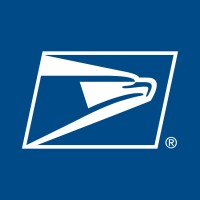Company Cyber Security Posture
NANA
NA Company Details
NA
NA
NA
NA
NA
NA
Scan still pending
NA
NA
Between 200 and 800
This score is AI-generated and less favored by cyber insurers, who prefer the TPRM score.
 NA Global Score
NA Global Score.png)

Company Scoring based on AI Models
| Model Name | Date | Description | Current Score Difference | Score |
|---|---|---|---|---|
| AVERAGE-Industry | 03-12-2025 | This score represents the average cybersecurity rating of companies already scanned within the same industry. It provides a benchmark to compare an individual company's security posture against its industry peers. | N/A | Between 200 and 800 |
Company Cyber Security News & History
| Entity | Type | Severity | Impact | Seen | Url ID | Details | View |
|---|
Company Subsidiaries

NA
Access Data Using Our API

Get company history
.png)
NA Cyber Security News
Internships and Career Opportunities | Home
These programs offer participating students opportunities for professional growth and career exploration by providing opportunities to develop their skills ...
Careers | Home
A career at USDA is not just a job, it's a calling. Your work directly impacts our nation's food supply, health, and environmental quality.
Here are all the federal agencies where workers are being fired
In the weeks since President Donald Trump has assumed office, more than 200000 federal workers at a number of agencies have had their roles ...
Cybersecurity Advisory Warns of Russian Cyber Actor Targeting Western Organizations
The Russian state-sponsored cyber actor uses password spraying, spearphishing and modification of Microsoft Exchange mailbox permissions.
A comprehensive look at DOGE’s firings and layoffs so far
Thousands of federal government employees have been shown the door in the first month of President Donald Trump's administration.
Here are all the federal agencies where workers are being fired
Are you a federal employee or contractor who has been impacted by the Trump administration's efforts to reduce the federal workforce?
Senator Melissa H. Wiklund Presents Bill to Fund Local Government Cybersecurity Efforts
ST. PAUL, Minn. — Today, the Minnesota Senate State and Local Government Committee heard Senate File 379, authored by Senator Melissa H.
Trump administration fires over 400 DHS employees as mass firings continue
The Trump administration has moved aggressively to fire federal employees, most of them recent hires, in different agencies, including at the ...
Which Federal Programs Are Under Scrutiny? The Budget Office Named 2,600 of Them.
We identified programs in the OMB instructions by their assistance listing number, then used program titles and obligation totals for the most recent complete ...

NA Similar Companies

United States Postal Service
As the United States Postal Service continues its evolution as a forward-thinking, fast-acting company capable of providing quality products and services for its customers, it continues to remember and celebrate its roots as the first national network of communications that literally bound a nation

Region Midtjylland
Region Midtjyllands mål er at skabe sundhed, trivsel, vækst og velstand for regionens 1,3 millioner borgere. Vi er cirka 30.000 kolleger, der er fælles om at sikre helhed og sammenhæng for patienter, brugere og borgere i regionen. Det gælder lige fra at tilbyde den bedste behandling her og nu til

Rijksoverheid
Op vrijwel alle werkterreinen en functieniveaus biedt de Rijksoverheid leuke en boeiende banen. Vacatures zijn bovendien in heel Nederland te vinden. Waar voor jou precies de mogelijkheden liggen hangt onder andere samen met je vooropleiding. Zowel met een mbo- of hbo-diploma als met een universitai

Gobierno del Estado de Guanajuato
Guanajuato es uno de los 31 estados que junto con el Distrito Federal conforman las 32 entidades federativas de México. Limita al oeste con el estado de Jalisco, al noroeste con Zacatecas, al norte San Luis Potosí, al este con el Estado de Querétaro y al sur el Estado de Michoacán. Tiene una extensi

General Directorate of Land Registry and Cadastre
The General Directorate of Land Registry and Cadastre (Tapu ve Kadastro Genel Müdürlügü) refers to the legislation regarding land registry and Cadastre in Turkey. Duties of General Directorate of Land Registry and Cadastre TO KEEP AND UPDATE LAND REGISTRY AND CADASTRE DATA OF THE COUNTRY UNDER

FDA
The Food and Drug Administration is an agency within the Department of Health and Human Services. The FDA is responsible for protecting the public health by ensuring the safety, efficacy, and security of human and veterinary drugs, biological products, and medical devices; and by ensuring the safet

Frequently Asked Questions
Explore insights on cybersecurity incidents, risk posture, and Rankiteo's assessments.
NA CyberSecurity History Information
How many cyber incidents has NA faced?
Total Incidents: According to Rankiteo, NA has faced 0 incidents in the past.
What types of cybersecurity incidents have occurred at NA?
Incident Types: The types of cybersecurity incidents that have occurred include .
Additional Questions
What Do We Measure?
















Every week, Rankiteo analyzes billions of signals to give organizations a sharper, faster view of emerging risks. With deeper, more actionable intelligence at their fingertips, security teams can outpace threat actors, respond instantly to Zero-Day attacks, and dramatically shrink their risk exposure window.
These are some of the factors we use to calculate the overall score:
Identify exposed access points, detect misconfigured SSL certificates, and uncover vulnerabilities across the network infrastructure.
Gain visibility into the software components used within an organization to detect vulnerabilities, manage risk, and ensure supply chain security.
Monitor and manage all IT assets and their configurations to ensure accurate, real-time visibility across the company's technology environment.
Leverage real-time insights on active threats, malware campaigns, and emerging vulnerabilities to proactively defend against evolving cyberattacks.




